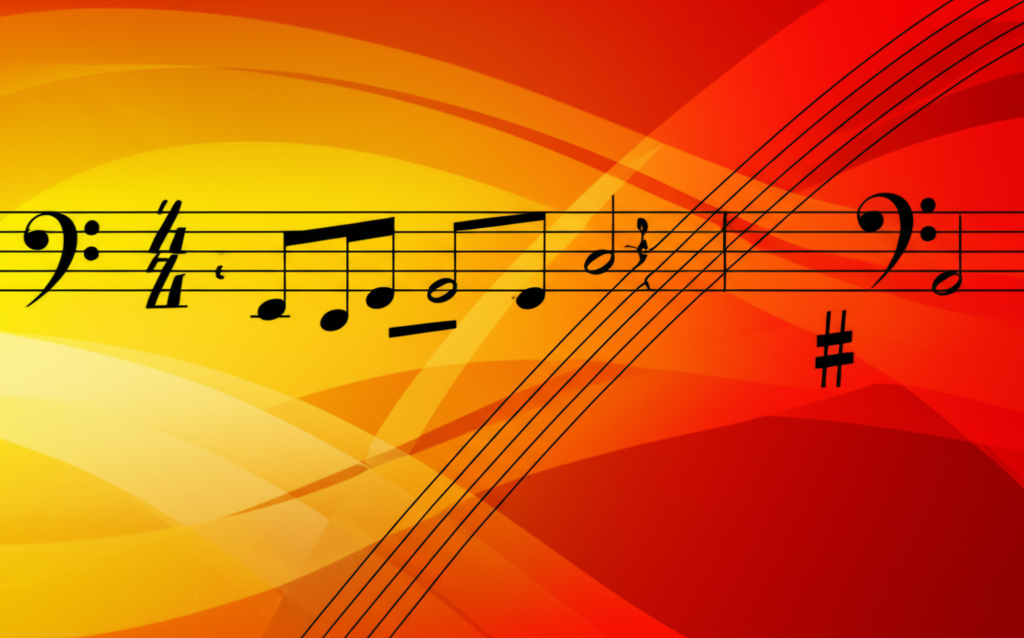
Power Chords: The Foundation of Rock Music

b4n1
May 25, 2025, 2:22 a.m.
Power Chords: The Foundation of Rock Music
Summary:
Power chords, consisting of just a root and perfect fifth, are the driving force behind rock, punk, and metal music. These simple yet powerful two-note structures create the characteristic sound of distorted guitar music and have revolutionized popular music since the 1950s.
Keywords:
Power chord, fifth chord, root and fifth, rock music, distortion, guitar, punk, metal, overdrive, amplification, heavy music.
Introduction:
The power chord stands as one of the most influential harmonic innovations in popular music history. Consisting of only a root note and its perfect fifth (and often its octave), power chords strip harmony down to its most essential elements, creating a sound that is both simple and incredibly powerful.
Born from the marriage of electric guitars and amplification technology, power chords became the backbone of rock and roll in the 1950s and have since evolved to define genres from punk to metal to grunge. Their unique character comes not just from their harmonic simplicity, but from how they interact with distortion and overdrive effects.
Structure and Components:
A power chord consists of:
- Root: The fundamental note that gives the chord its name
- Perfect fifth: A note 7 semitones above the root
- Optional octave: The root note repeated an octave higher
Unlike major or minor chords, power chords contain no third, making them neither major nor minor. This ambiguity gives them their distinctive neutral yet powerful character and allows them to work in both major and minor contexts.
Power Chord Formula:
Root (1) + Perfect 5th (5) + Optional Octave (8)
Example: C Power Chord = C + G + C (octave)
Examples:
C Power Chord:
Common Power Chord Progression:
Notación musical:
Power Chord Riff Example:
Notación musical:
Historical Development:
The power chord's evolution is closely tied to the development of electric guitar technology:
- 1950s: Early rock pioneers like Chuck Berry and Link Wray began using simplified chord forms
- 1960s: The Kinks, Who, and early heavy bands expanded power chord usage
- 1970s: Heavy metal bands like Black Sabbath and Led Zeppelin made power chords central to their sound
- 1980s-1990s: Punk and grunge movements stripped music down to power chord essentials
- 2000s-present: Power chords remain fundamental in modern rock, metal, and alternative music
Why Power Chords Work:
Acoustic Properties:
The perfect fifth interval (7 semitones) has a frequency ratio of 3:2, making it one of the most consonant intervals after the octave. This natural harmonic relationship creates a stable, resonant sound that maintains clarity even under heavy distortion.
Distortion Compatibility:
When guitar signals are overdriven or distorted, additional harmonics and frequencies are generated. Power chords work particularly well with distortion because:
- Fewer notes mean less harmonic complexity and muddiness
- The perfect fifth interval remains recognizable through distortion
- The absence of thirds prevents major/minor conflicts with generated harmonics
Guitar Techniques and Fingerings:
Standard Power Chord Shapes:
On guitar, power chords are typically played using these common fingerings:
- Root on 6th string: Use index finger on root, ring finger two frets higher on 5th string
- Root on 5th string: Use index finger on root, ring finger two frets higher on 4th string
- Root on 4th string: Use index finger on root, ring finger two frets higher on 3rd string
Moveable Shapes:
Power chord shapes are easily moveable across the fretboard, making them incredibly versatile for playing in different keys without changing fingering patterns.
Power Chord Movement Example:
Notación musical:
Musical Applications:
Rhythm Guitar:
Power chords excel as rhythm instruments, providing:
- Strong rhythmic foundation
- Clear harmonic support without complexity
- Ability to cut through dense mixes
- Dynamic range from clean to heavily distorted
Riff Construction:
Many iconic rock riffs are built entirely from power chord movements, creating memorable melodic lines while maintaining harmonic strength.
Song Structure:
Power chords often form the harmonic backbone of entire songs, particularly in punk and metal genres where simplicity and power are prioritized over harmonic complexity.
Genre Applications:
Rock and Roll:
Early rock pioneers used power chords to create driving, energetic music that could cut through primitive amplification systems.
Heavy Metal:
Metal music relies heavily on power chords for:
- Creating heavy, aggressive sounds
- Maintaining clarity in down-tuned guitars
- Building complex riffs from simple harmonic materials
Punk:
Punk rock stripped music down to its essentials, with power chords providing maximum impact with minimal technique requirements.
Grunge:
1990s grunge music used power chords to create a raw, unpolished sound that contrasted with the complex production of 1980s music.
Famous Power Chord Songs:
Countless iconic songs feature prominent power chord usage:
- "Wild Thing" (The Troggs): Classic three-chord progression using power chords
- "Smoke on the Water" (Deep Purple): Perhaps the most famous power chord riff
- "Iron Man" (Black Sabbath): Defining heavy metal power chord usage
- "Smells Like Teen Spirit" (Nirvana): Grunge anthem built on power chord progression
- "Seven Nation Army" (The White Stripes): Modern power chord classic
Technical Considerations:
Amplification:
Power chords are most effective when played through amplified systems, particularly with some degree of overdrive or distortion to enhance their harmonic content.
Tuning and Intonation:
The simplicity of power chords makes intonation issues more noticeable, requiring careful attention to guitar setup and tuning.
String Dampening:
Proper muting technique is crucial when playing power chords to prevent unwanted string noise and maintain clarity.
Variations and Extensions:
Sus2 and Sus4 Power Chords:
Adding suspended seconds or fourths to power chords creates variations while maintaining their essential character.
Power Chord Inversions:
Playing the fifth in the bass creates inverted power chords with a different harmonic color.
Power Chord Variations:
Notación musical:
Learning and Practice:
For Beginners:
Power chords are often among the first chords taught to beginning guitarists because they:
- Require minimal finger stretching
- Use simple, moveable shapes
- Sound impressive quickly
- Build essential rhythm guitar skills
Practice Techniques:
Effective power chord practice includes:
- Working on clean transitions between chord positions
- Developing rhythmic precision
- Practicing string muting and dampening
- Building stamina for extended playing
Cultural Impact:
Power chords have had an enormous cultural impact beyond just music:
- Democratization of music: Simplified the technical requirements for rock music
- Youth culture: Became symbols of rebellion and energy
- Technology driver: Influenced amplifier and effects pedal development
- Genre creation: Enabled entire musical genres that would be impossible with complex harmony
Beyond Guitar:
While most associated with guitar, power chord concepts apply to other instruments:
- Piano: Root and fifth combinations in rock and pop styles
- Bass: Root-fifth movement in bass lines
- Synthesizers: Electronic power chord sounds in various genres
- Orchestration: Simplified harmonic textures in film and game music
Fun Facts:
- Power chords are often notated with a "5" after the chord name (e.g., C5, F5, G5).
- The term "power chord" wasn't widely used until the 1970s, though the technique existed earlier.
- Some classical composers like Beethoven used root-fifth combinations, predating rock's "invention" of power chords.
- Power chords work equally well in major and minor keys due to their lack of thirds.
- The simplicity of power chords allows for extremely fast playing, enabling speed metal and punk techniques.
Conclusions:
Power chords represent a perfect example of how musical innovation can emerge from simplification rather than complication. By stripping harmony down to its most essential elements—root and fifth—power chords created entirely new possibilities for musical expression and helped define multiple genres of popular music.
Their combination of harmonic simplicity, technical accessibility, and sonic power has made them indispensable tools for musicians across skill levels. From beginning guitarists learning their first songs to professional metal bands creating complex compositions, power chords continue to provide a foundation for musical creativity.
Understanding power chords is essential for anyone interested in rock, metal, punk, or alternative music. Whether you're performing, composing, or simply listening, recognizing the role and character of power chords will deepen your appreciation for these influential musical structures.
References:
Walser, R. (1993). Running with the Devil: Power, Gender, and Madness in Heavy Metal Music. Wesleyan University Press.
Everett, W. (2009). The Foundations of Rock: From "Blue Suede Shoes" to "Suite: Judy Blue Eyes". Oxford University Press.
Moore, A. F. (2012). Song Means: Analysing and Interpreting Recorded Popular Song. Ashgate Publishing.
Stephenson, K. (2002). What to Listen for in Rock: A Stylistic Analysis. Yale University Press.
Tagg, P. (2014). Everyday Tonality II: Towards a Tonal Theory of What Most People Hear. The Mass Media Music Scholars' Press.
